Open a kitchen drawer almost anywhere in the world and you’re likely to find something that starts with L. A jar of lavender, a pinch of lemongrass, maybe some lingering laurel leaves waiting to flavor a stew. These are ingredients that don’t just add taste—they set a mood, turning everyday cooking into something fragrant and memorable.
What makes the “L” group special is its range: some herbs are delicate and calming, while others like long pepper or lime leaves hit with bold character. Together, they prove that flavor is as much about atmosphere as it is about taste. In this article, we’ll wander through the spices, seasonings, and herbs beginning with L, discovering how each one adds its own kind of magic to the table.
Spices that Start with L
1. Laurel (Bay Leaf, Dried)
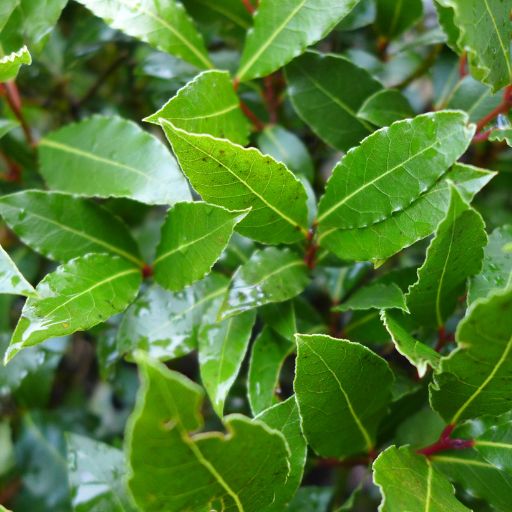
- Origin & History: Native to the Mediterranean; used since Roman times.
- Appearance: Dried, olive-green leaves.
- Taste & Aroma: Herbal, slightly floral, sharp.
- Culinary Uses: Soups, stews, sauces, rice dishes.
- Health Benefits: Aids digestion and may reduce inflammation.
- Fun Fact: Ancient Greeks crowned victors with laurel wreaths.
2. Long Pepper
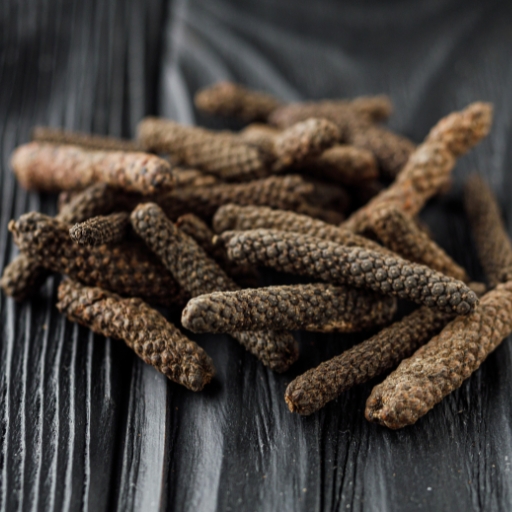
- Origin & History: Native to India and Indonesia; prized in ancient Greece and Rome.
- Appearance: Long, catkin-like clusters of tiny pepper seeds.
- Taste & Aroma: Hot, earthy, with notes of cinnamon and ginger.
- Culinary Uses: Curries, pickles, spice blends.
- Health Benefits: Supports digestion and respiratory health.
- Fun Fact: Long pepper was used in Europe before black pepper became dominant.
3. Licorice Root (as Spice)
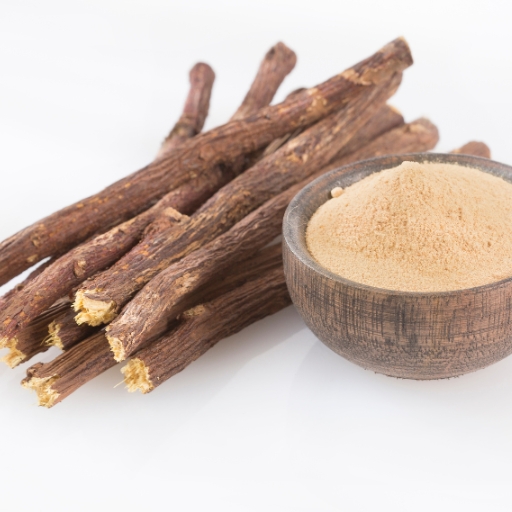
- Origin & History: Cultivated in the Middle East, Asia, and Europe for thousands of years.
- Appearance: Brown, woody root sticks or powdered form.
- Taste & Aroma: Sweet, earthy, slightly bitter.
- Culinary Uses: Flavoring candies, teas, liqueurs, and baked goods.
- Health Benefits: Soothes sore throats, supports digestion.
- Fun Fact: Licorice root is 30–50 times sweeter than sugar.
4. Lavender (Dried Blossoms as Spice)
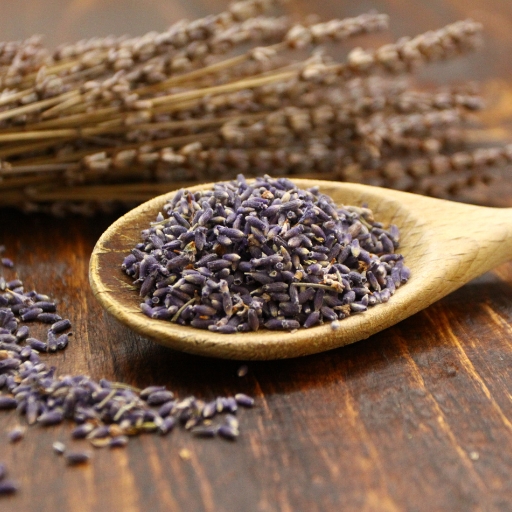
- Origin & History: Native to the Mediterranean; long used in French cuisine.
- Appearance: Tiny purple dried buds.
- Taste & Aroma: Floral, sweet, slightly citrusy.
- Culinary Uses: Teas, desserts, spice blends like herbes de Provence.
- Health Benefits: Promotes relaxation and reduces stress.
- Fun Fact: Lavender cookies are a signature treat in Provence.
5. Lemon Peel (Dried Spice)
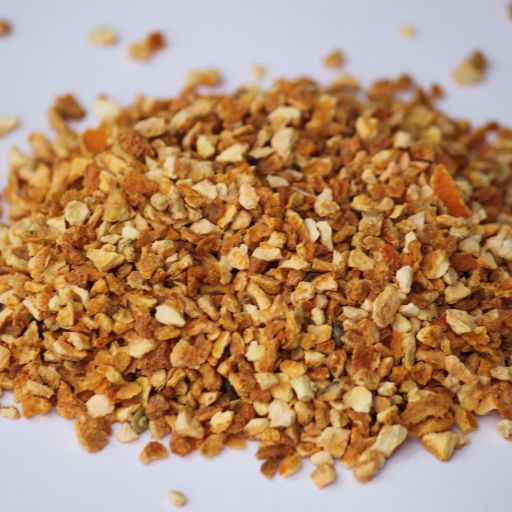
- Origin & History: Used worldwide for centuries; zest and peel valued in both sweet and savory cooking.
- Appearance: Yellow dried strips or powdered zest.
- Taste & Aroma: Citrusy, tangy, aromatic.
- Culinary Uses: Spice blends, baked goods, teas, marinades.
- Health Benefits: Rich in vitamin C and antioxidants.
- Fun Fact: Dried lemon peel is often used in Middle Eastern spice mixes.
6. Lemongrass (Dried Spice Form)
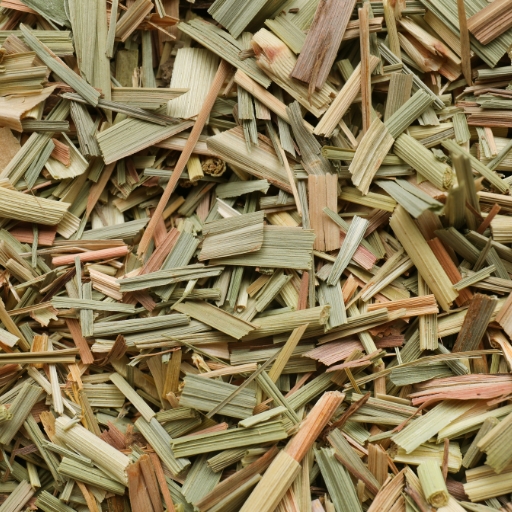
- Origin & History: Native to South and Southeast Asia; essential in Thai and Vietnamese cuisines.
- Appearance: Dried yellow-green stalk pieces or powder.
- Taste & Aroma: Citrusy, lemony, with ginger undertones.
- Culinary Uses: Soups, curries, teas, marinades.
- Health Benefits: Supports digestion and immunity.
- Fun Fact: Lemongrass oil is also used as a natural insect repellent.
7. Lime Peel (Dried)
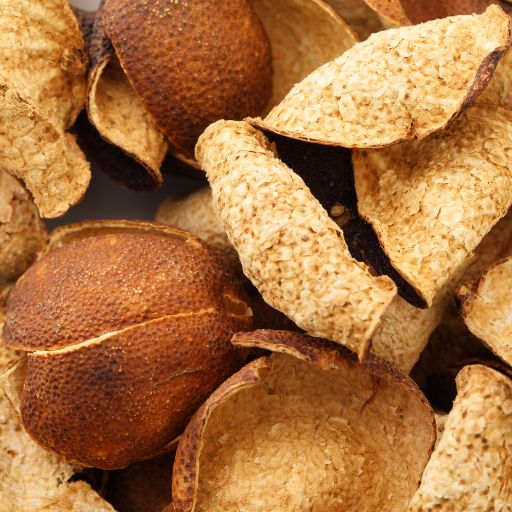
- Origin & History: Used in Middle Eastern, Caribbean, and Asian spice mixes.
- Appearance: Green dried strips or powder.
- Taste & Aroma: Tangy, tart, citrusy.
- Culinary Uses: Spice blends, chutneys, teas, desserts.
- Health Benefits: High in vitamin C, supports skin health.
- Fun Fact: Dried black lime (loomi) is a popular Omani spice made from sun-dried limes.
8. Lovage Seeds
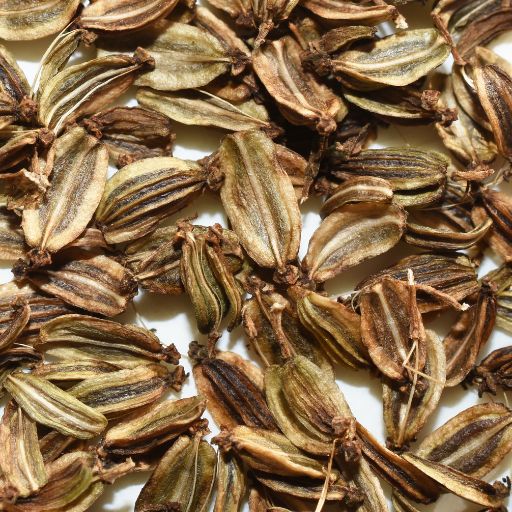
- Origin & History: Native to the Mediterranean; used since Roman times.
- Appearance: Small, brown, oval seeds.
- Taste & Aroma: Strong celery-like flavor.
- Culinary Uses: Pickling, breads, soups, spice mixes.
- Health Benefits: Aids digestion and detoxification.
- Fun Fact: Lovage was once a popular monastery garden herb across Europe.
9. Licorice Powder (as Sweet Spice)

- Origin & History: Ground from dried licorice root; used in Scandinavian and Middle Eastern cooking.
- Appearance: Fine, light brown powder.
- Taste & Aroma: Sweet, earthy, slightly bitter.
- Culinary Uses: Desserts, candies, liqueurs.
- Health Benefits: Supports throat health and digestion.
- Fun Fact: Salty licorice candy is a Nordic specialty made with this powder.
10. Lima Bean Spice (Roasted & Ground)
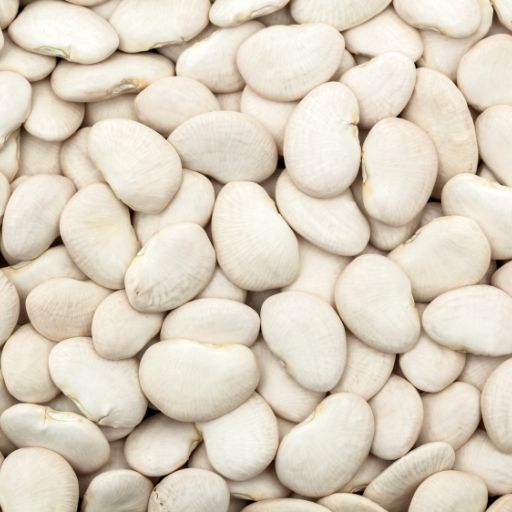
- Origin & History: Native to Central and South America; occasionally used as a spice when roasted.
- Appearance: Brownish powder from roasted beans.
- Taste & Aroma: Nutty, earthy, slightly smoky.
- Culinary Uses: Thickening soups, spice blends, sauces.
- Health Benefits: Protein-rich, supports heart health.
- Fun Fact: While mostly eaten as a legume, some traditions grind roasted beans into a seasoning.
Seasonings that Start with L
1. Lemon Pepper Seasoning
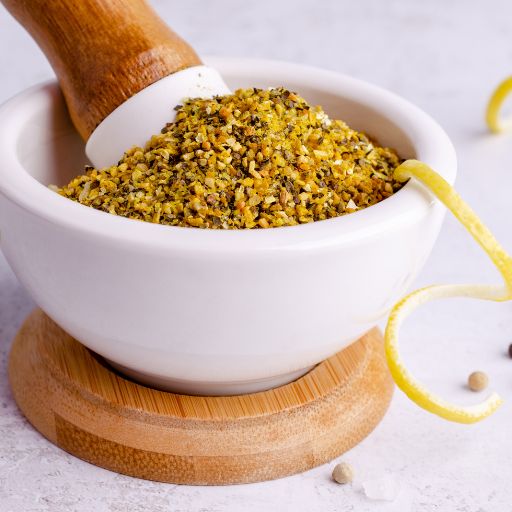
- Origin & History: Popularized in the U.S. in the 20th century.
- Appearance: Coarse blend of cracked black pepper, dried lemon zest, and salt.
- Taste & Aroma: Tangy, zesty, peppery.
- Culinary Uses: Grilled chicken, fish, roasted vegetables, marinades.
- Health Benefits: Adds flavor without heavy sauces; vitamin C from lemon peel.
- Fun Fact: A staple on wing menus, especially in Atlanta’s food scene.
2. Louisiana Cajun Seasoning
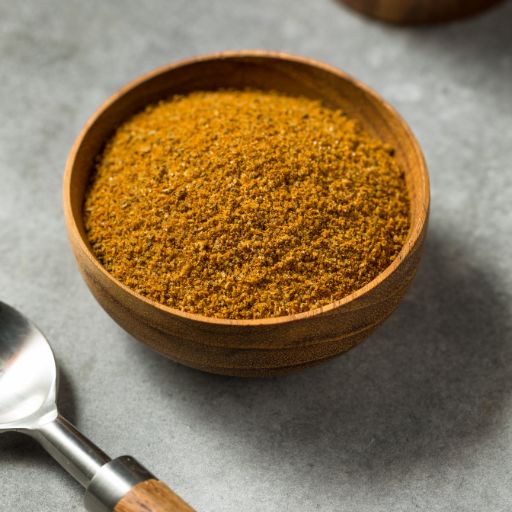
- Origin & History: Rooted in Louisiana’s Cajun communities blending French, African, and Native traditions.
- Appearance: Reddish-brown mix with paprika, cayenne, garlic, onion, and herbs.
- Taste & Aroma: Spicy, smoky, savory.
- Culinary Uses: Blackened fish, chicken, jambalaya, gumbo.
- Health Benefits: Chili and garlic aid digestion and boost circulation.
- Fun Fact: Every Cajun family has its own twist on this seasoning.
3. Louisiana Creole Seasoning
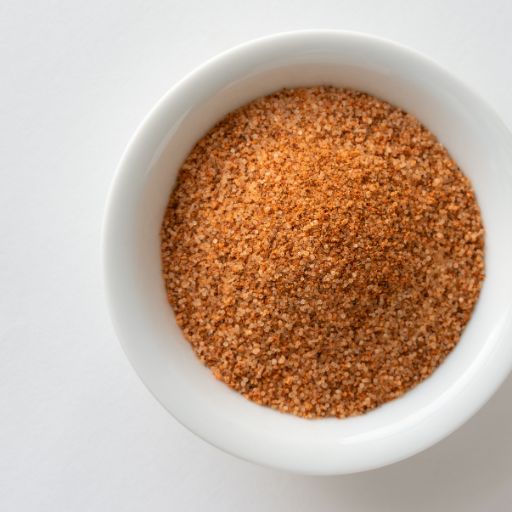
- Origin & History: Born in New Orleans, a blend reflecting French, Spanish, and Caribbean influence.
- Appearance: Similar to Cajun, often with more herbs.
- Taste & Aroma: Bold, herby, peppery.
- Culinary Uses: Shrimp creole, red beans and rice, stews.
- Health Benefits: Combines herbs and spices rich in antioxidants.
- Fun Fact: Creole seasoning tends to be less spicy but more herb-forward than Cajun.
4. Lemon Herb Seasoning
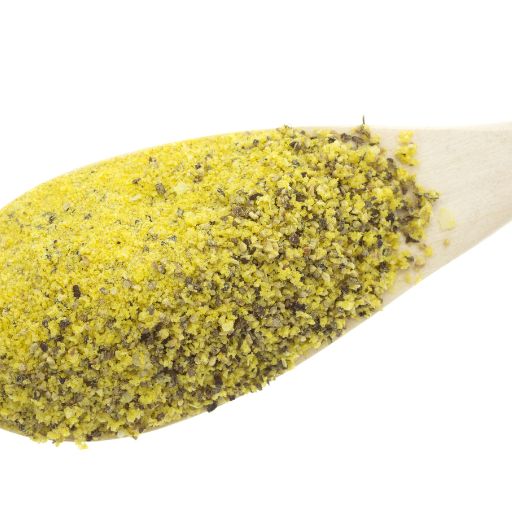
- Origin & History: A versatile modern blend inspired by Mediterranean cooking.
- Appearance: Greenish-yellow mix of dried lemon peel, parsley, oregano, and garlic.
- Taste & Aroma: Fresh, zesty, savory.
- Culinary Uses: Salads, fish, grilled chicken, pasta.
- Health Benefits: Light seasoning that boosts flavor without heavy salt.
- Fun Fact: Often sold as a salt-free option in health-conscious blends.
5. Lemon Curry Seasoning
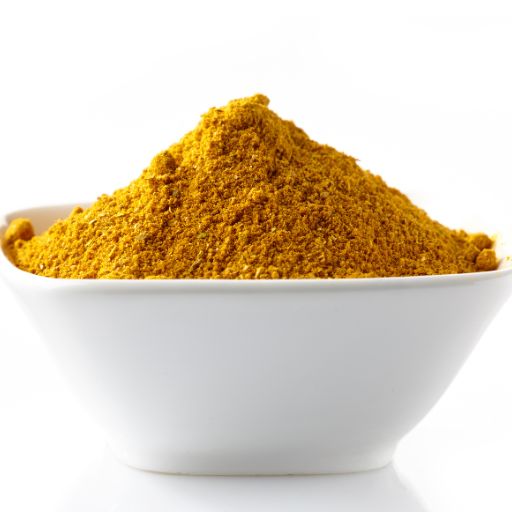
- Origin & History: Fusion blend combining Indian curry spices with lemon peel.
- Appearance: Golden-yellow mix with turmeric, coriander, cumin, and lemon zest.
- Taste & Aroma: Warm, tangy, earthy.
- Culinary Uses: Chicken curry, vegetable stews, rice dishes.
- Health Benefits: Turmeric and lemon provide anti-inflammatory benefits.
- Fun Fact: A favorite in modern gourmet spice companies.
6. Laksa Paste
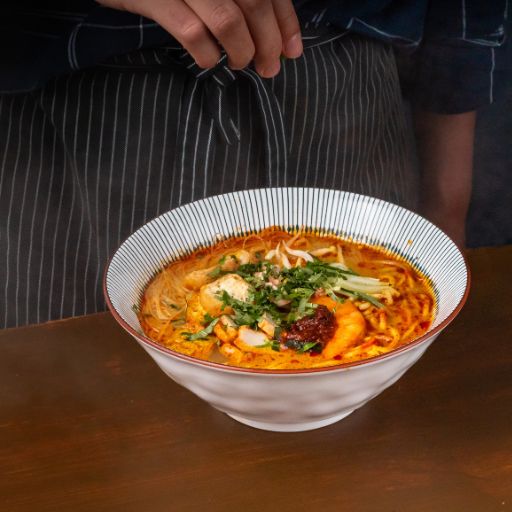
- Origin & History: A Southeast Asian seasoning paste used in Malaysian and Singaporean cooking.
- Appearance: Reddish-orange paste with chili, lemongrass, turmeric, and shrimp paste.
- Taste & Aroma: Spicy, coconut-rich, aromatic.
- Culinary Uses: Base for laksa noodle soup, curries, stews.
- Health Benefits: Contains metabolism-boosting chilies and herbs.
- Fun Fact: Laksa is considered one of Singapore’s national dishes.
7. Larb Seasoning
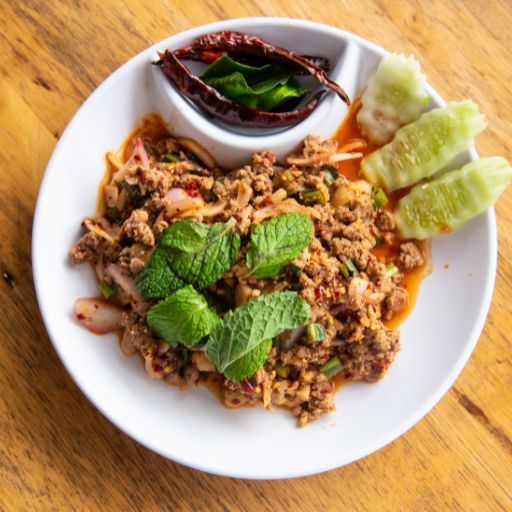
- Origin & History: Traditional in Laos and Northern Thailand.
- Appearance: Coarse mix of ground roasted rice, chili flakes, and herbs.
- Taste & Aroma: Nutty, spicy, fresh.
- Culinary Uses: Flavoring for minced meat salads (larb), vegetables, and wraps.
- Health Benefits: Rice powder adds texture while chilies boost circulation.
- Fun Fact: Larb is sometimes called the “unofficial national dish of Laos.”
Herbs that Start with L
1. Lavender
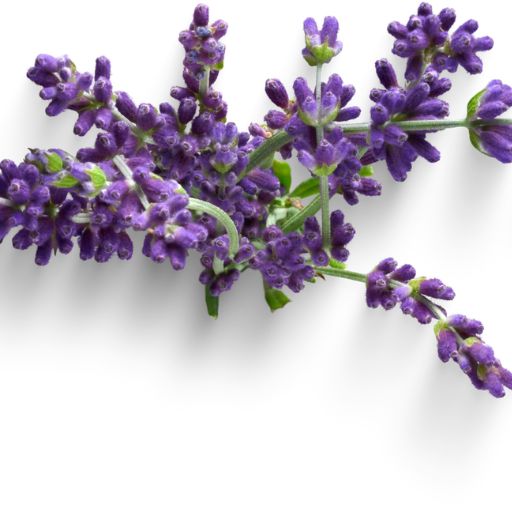
- Origin & History: Native to the Mediterranean; prized since Roman times for both cooking and fragrance.
- Appearance: Tall stems with clusters of small purple flowers.
- Taste & Aroma: Sweet, floral, with light citrus notes.
- Culinary Uses: Teas, cookies, cakes, syrups, and herbes de Provence.
- Health Benefits: Calming effects, supports sleep and stress relief.
- Fun Fact: Lavender fields in Provence are as famous for cuisine as for perfume.
2. Lemongrass
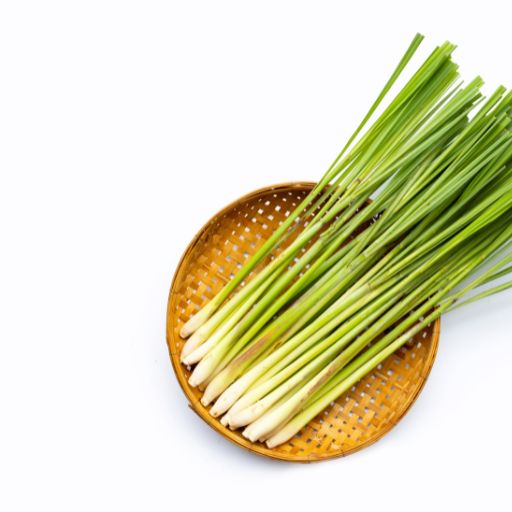
- Origin & History: Native to South and Southeast Asia; widely used in Thai, Vietnamese, and Indian cooking.
- Appearance: Long, thin green stalks with a bulbous white base.
- Taste & Aroma: Citrusy with a ginger-like undertone.
- Culinary Uses: Curries, soups, teas, marinades, and stir-fries.
- Health Benefits: Aids digestion, relieves stress, boosts immunity.
- Fun Fact: Lemongrass tea is a common home remedy across Asia.
3. Lemon Balm
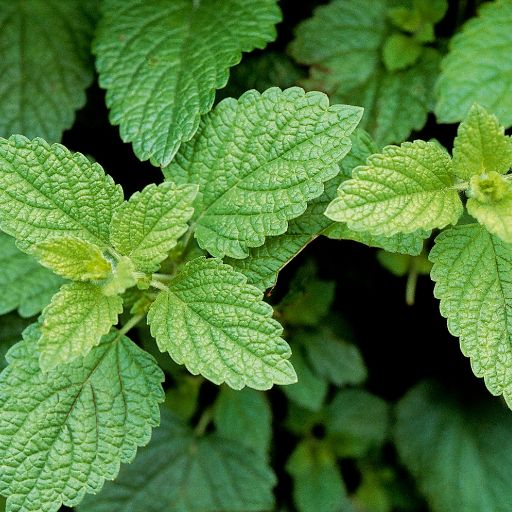
- Origin & History: Native to Europe and West Asia; cultivated since the Middle Ages.
- Appearance: Bright green, oval serrated leaves, resembling mint.
- Taste & Aroma: Mild lemon flavor with herbal sweetness.
- Culinary Uses: Herbal teas, salads, fruit dishes, sauces.
- Health Benefits: Calms anxiety, aids sleep, supports digestion.
- Fun Fact: Ancient Greeks dedicated lemon balm to bees, believing it attracted swarms.
4. Lemon Verbena
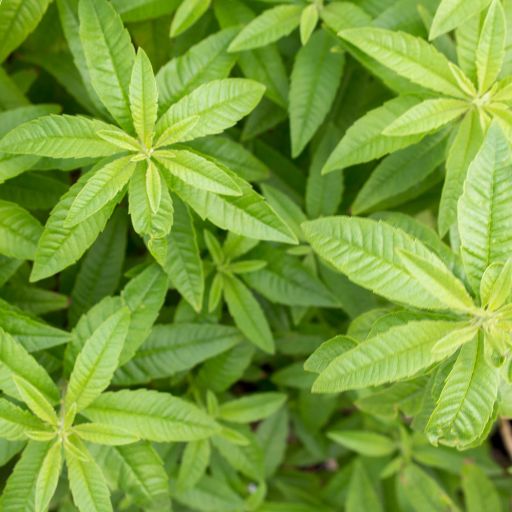
- Origin & History: Native to South America; introduced to Europe in the 18th century.
- Appearance: Long, lance-shaped green leaves on woody stems.
- Taste & Aroma: Strong lemon fragrance, sharper than lemon balm.
- Culinary Uses: Teas, marinades, sorbets, custards, herbal liqueurs.
- Health Benefits: Helps reduce stress and soothe stomach ailments.
- Fun Fact: A favorite herb in Victorian kitchens for perfuming sugar.
5. Lovage
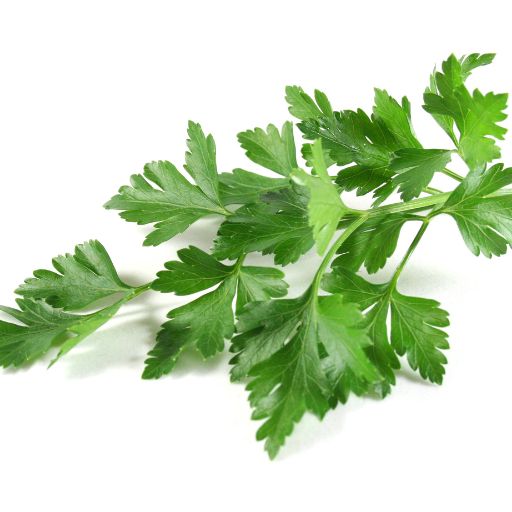
- Origin & History: Native to the Mediterranean; grown in medieval monastery gardens.
- Appearance: Large, glossy green leaves resembling celery.
- Taste & Aroma: Strong celery-like flavor with a hint of anise.
- Culinary Uses: Soups, stews, potato dishes, pickles, salads.
- Health Benefits: Aids digestion, acts as a mild diuretic.
- Fun Fact: In old Europe, people carried lovage leaves in their pockets to freshen breath.
6. Laurel (Bay Leaf, Fresh)
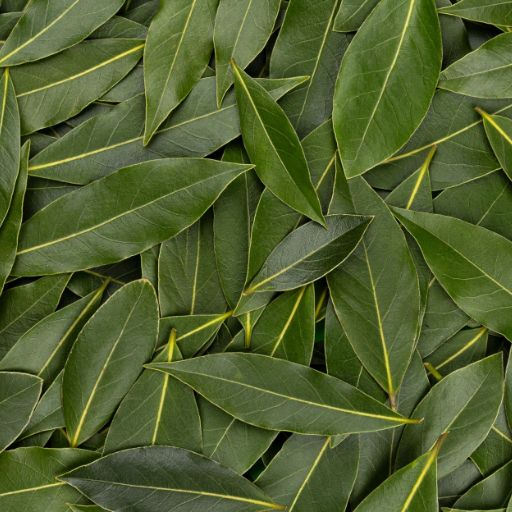
- Origin & History: Native to the Mediterranean; sacred in Greek and Roman traditions.
- Appearance: Glossy, dark green leaves.
- Taste & Aroma: Herbal, sharp, slightly floral.
- Culinary Uses: Flavoring soups, stews, sauces, curries, marinades.
- Health Benefits: Supports digestion and may reduce inflammation.
- Fun Fact: The word “baccalaureate” comes from the tradition of crowning scholars with laurel.
7. Lemon Thyme
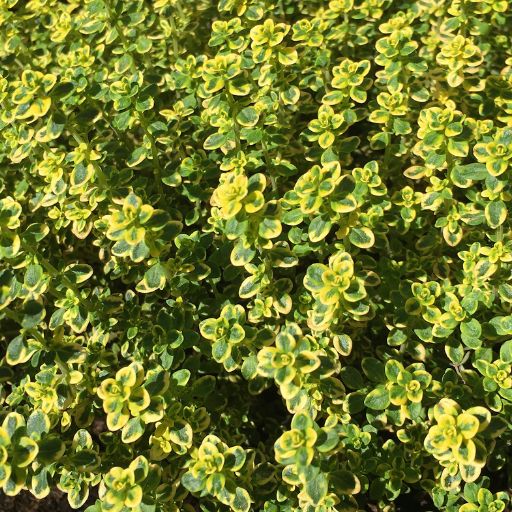
- Origin & History: A hybrid variety developed in Europe, combining thyme and lemony traits.
- Appearance: Small, oval, green leaves with a hint of yellow.
- Taste & Aroma: Classic thyme flavor with citrus notes.
- Culinary Uses: Fish, poultry, roasted vegetables, sauces, herbal teas.
- Health Benefits: Antimicrobial, supports respiratory health.
- Fun Fact: Gardeners love it because it doubles as a culinary and ornamental plant.
8. Lemon Basil
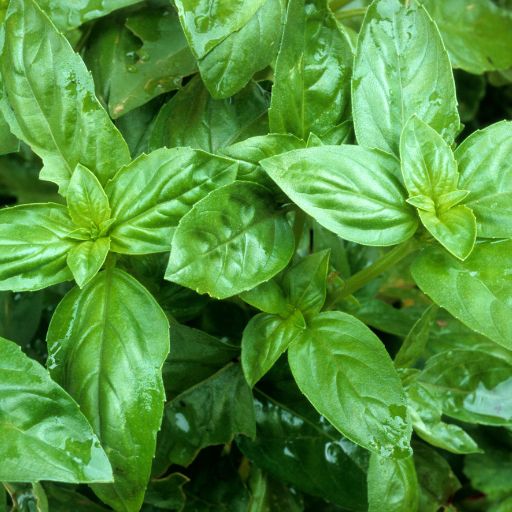
- Origin & History: Native to Southeast Asia; commonly used in Indonesian and Thai cooking.
- Appearance: Smaller, light green leaves compared to sweet basil.
- Taste & Aroma: Basil flavor with a distinct lemony freshness.
- Culinary Uses: Curries, salads, stir-fries, teas.
- Health Benefits: Rich in antioxidants, supports digestion.
- Fun Fact: Essential in Thai dishes like gaeng om and laab.
9. Lettuce (Looseleaf Varieties as Herb-Greens)
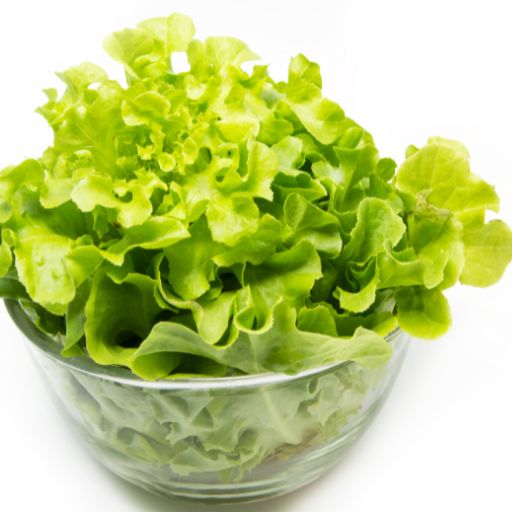
- Origin & History: Native to the Mediterranean; cultivated by Egyptians over 4,000 years ago.
- Appearance: Loose green leaves, varying from soft to crisp.
- Taste & Aroma: Mild, watery, fresh.
- Culinary Uses: Salads, wraps, soups, and sandwiches.
- Health Benefits: Hydrating, low-calorie, rich in vitamin K.
- Fun Fact: Romans believed lettuce promoted good sleep after meals.
Conclusion
From the floral sweetness of lavender to the citrus lift of lemongrass and the hearty depth of lovage, the letter L offers herbs that shape dishes with freshness, fragrance, and character. These leaves and stalks prove that sometimes the smallest garnish or infusion makes the biggest difference. Next up, we’ll move into the marvelous world of M, where the variety of spices, seasonings, and herbs grows even richer.

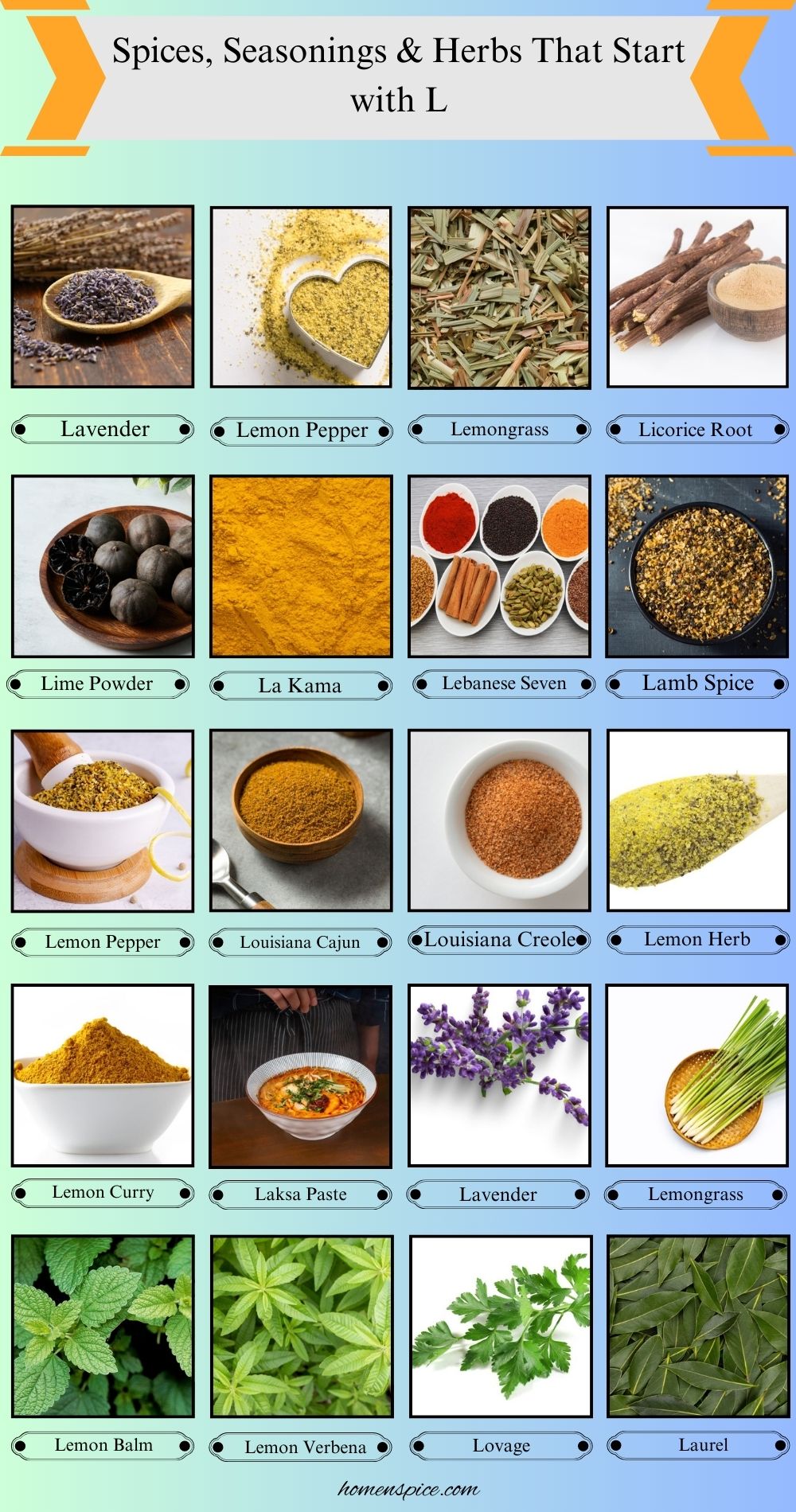
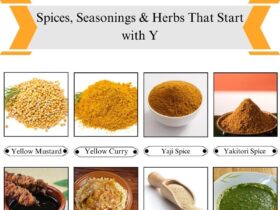
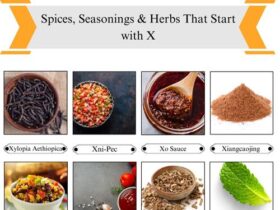
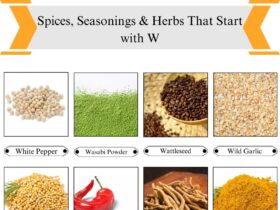
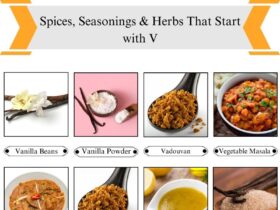
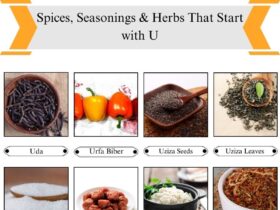
Leave a Reply